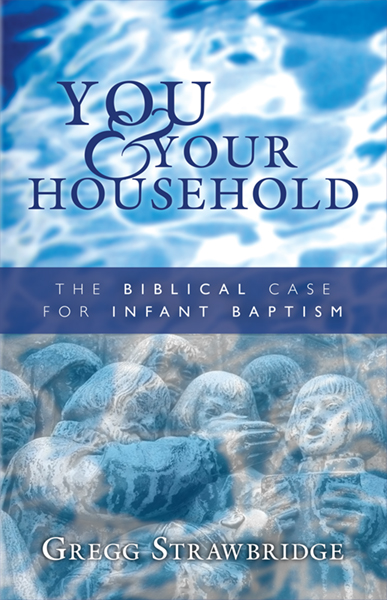Posted by Aaron W Eley
On this day, the 23rd of April, Christians throughout many countries in the world will be observing Georgemas, more commonly referred to as the Feast of St. George of Lydda. George is remembered as the Patron Saint of England, Libya, Lebanon, and many others including being the object of devotion of the country of Georgia (whose flag bears the Jerusalem Cross)[1], Catalonia, Aragon and others. Indeed, St. George’s Day will be celebrated nationally in England and the City of London over which the familiar ‘red cross on a white field’ of the Flag of St. George, the standard emblem of the Crusades, will be flown.
George was born in AD 270, in what is now Eastern Turkey, to Grecian parents of the Christian faith [2]. His father was from Cappadocia in Asia Minor and his mother from Lydda [3], which was briefly renamed Georgiopolis before the Muslim Conquest of the Levant ended that city’s Roman Period in the 7th century.
Georgios (Gr. ‘worker of the land’) was a Greek of noble birth. At the age of 14, George’s father died while serving as an officer in the Roman Army. A few years later, George also lost his mother [4].
George made the long journey back north to the ancient, imperial city of Nicomedia (eastern capital of the Roman Empire located 62-miles east of Instanbul [5]) where he presented himself to Emperor Diocletian, who had known George’s father. Over the next decade, George rose in the ranks to Tribunus Militum [6].
Gaius Diocletian had allowed Christians to live in peace during most of his rule. Goaded by Gaius Galerius, whose short rule was marred by the persecution of Christians, Diocletian issued an edict that all Christians serving in the ranks of the Romanorum were to be taken into custody that they might offer sacrifice to the Roman gods, in an effort to attain Pax Roman through pax deorum, or be discharged from service. As Peter Leithart intimated in his study of this period of early Christendom, “At least at the heart of the empire, in the court and in the army, sacrifices would continue without being polluted by Christians. With the Christians gone, the problem seemed to be solved,” and the work of the haruspices could continue uninterrupted [7]. The public declaration of this edict would mark the beginning of the tenth and last great persecution of Christians by the Roman Empire. Uprising of opposition, pacified by Statist methods, seldom stays appeased much longer than public collective memory.
With all of the weight of his influence, St. George resigned his command and confronted the Emperor for his harshness and bloody methods, protesting Diocletian in as public a forum as the Emperor’s edict had affronted the Christians command to obey their God and worship Him alone. George declared his opposition to Roman Law fearlessly and unwaveringly declared the name of Jesus to the point that he was only silenced in the square by being arrested [8]. Diocletian attempted to induce him to silence with the offer of wealth and land, if only he would offer sacrifice to the pagan gods of Rome [temptation language: Gen 3:1-6, Matt 4:1-11]. George would not yield. Knowing what fate awaited him at the hands of the ruthless Emperor, George prepared himself by giving away his wealth to the poor. He was tortured and drug through the streets behind chariots, yet still he would not renounce the Lordship of Jesus the Christ. He was beheaded, becoming one of the first martyrs of Diocletian’s brutal persecution of Christians that would not end until the next decade later with the entrance of the Emperor Constantine the Great [9], who would cross the Alps with his army and put an end to the Roman torturing and murder of Christians[10].
The story of the martyrdom of St. George found it’s way to Britannia, almost 400-years later, by the hagiographer St. Adomnán, author of the Vita Columbae and Abbot of the Isle of Iona, Scotland, AD 679-704. And the venerable St. Bede of Northern England (AD 673-735) also made reference to George of Lydda in his writings [11].
As Dr. Francis Schaeffer admonished us in magnum opus How Should We Then Live, “Let us not forget why the Christians were killed. They were not killed because they were worshipping Jesus. Many religions were practiced at that time in the Roman World…Nobody cared who worshipped whom as long as the unity of the State was maintained – centered in the worship of the Emperor.” The followers of Christ were put to death because of their worshipping of the “One God only” was viewed as treason by the throne of Rome [12]. For more from Dr. Schaeffer and the Theory of Civil Disobedience, see his A Christian Manifesto.
~ George the Dragon-Slayer ~

“The whole theme of Scripture is ‘slay the dragon, and get the girl.'” ~ Doug Wilson
Now, for the fun stuff. Cultures the world over have evidence of dragon mythology [13]. And, as Dr. Malcolm Guite has said, “when I use the word myth, I mean the really real stuff.” the whole medieval legend of St. George of Lydda revolves around the tale of his slaying of a dragon. The earliest depictions of the heroic tale were brought back by Crusaders from the land of George’s father, Cappadocia. And the earliest surviving text exists from 11th century Georgia.
Listen now, children: In Libya, in the city of Cyrene, a dragon (wisest of all beasts, yet cursed for it’s covetous tongue), had made it’s nest along a fresh water stream where the inhabitants of the town would go to draw their water. In trade for his guarding their safe use of the water source, the dragon demanded homage be paid in the form of sacrificial sheep. When the town ran short of mutton, the dragon demanded the virtuous flesh of the town’s maidens. Enter George, stage left, high upon a white steed [Rev 19:11] with the red sign of the cross emblazoned upon his breast, George road down the dragon and freed the poor people of Cyrene from the merciless jaws of the serpent. In return for his selfless service on their behalf, they renounced their pagan gods and converted to Christianity – receiving their baptisms in the clean pool reclaimed from the dominion of the dragon [14].
~ The Lighter Side of George ~
Some verse:
From Dr. Malcolm Guite: Hatley St. George (an excerpt)
“Stand here a while and drink the silence in.
Where clear glass lets in living light to touch
And bless your eyes. A beech tree’s tender green
Shimmers beyond the window’s lucid arch.
You look across an absent sanctuary;
No walls or roof, just holy, open space,
Leading your gaze out to the fresh-leaved beech
God planted here before you first drew breath [15].”
I have learned my lessons well that any post, that mentions glorified language and English history, would be remiss to not invoke Gilbert Keith Chesterton. Mr. Chesterton remedies that for us in regards to the subject of the day. On this day, I do invite you to raise a glass, and raise your voice in remembrance of St. George.
The Englishman ~ G K Chesterton
St George he was for England
And before he killed the dragon
He drank a pint of English ale
Out of an English flagon.
For though he fast right readily
In hair-shirt or in mail,
It isn’t safe to give him cakes
Unless you give him ale.
St George he was for England,
And right gallantly set free
The lady left for dragon’s meat
And tied up to a tree;
But since he stood for England
And knew what England means,
Unless you give him bacon
You mustn’t give him beans.
St George he is for England,
And shall wear the shield he wore
When we go out in armour
With battle-cross before.
But though he is jolly company
And very pleased to dine,
It isn’t safe to give him nuts
Unless you give him wine.
Aaron W Eley is the owner of a Real Estate Appraisal Business. He and his wife Aleta are parents to four children of the Covenant. They are members of Auburn Avenue Presbyterian Church (CREC), along the banks of the Ouachita River in Monroe, LA, where their children attend Geneva Academy
~ Resources ~
-
The Christian Almanac, Dr. George Grant (Founder of Kings Meadow Study Center & Mr. Greg Wilbur (Senior Fellow of New College Franklin),
- Lydda (Greco-Latin) or Lod (Hebrew) appears in the Old Testament among the Cities of the Tribe of Benjamin, in the ‘valley of the craftsmen’ (I Chron 8:12, Exra 2:33, Nehemiah 7:37 & 11:35) and in the New Testament as Lydda.
- Life of St. George – wiki
- Nicomedia, modern Izmit along the banks of the Sea of MarMara- wiki
- (op cit) ‘Tribune of Soldiers’. Above a Centurion (commander of 100-soldiers) and below a Legatus (Legionary commanders often promoted from the Praetorian Guard). There would have been 6-tribunes per legion (1000-soldiers in the Late Empire)
- Leithart, Peter J; Defending Constantine: The Twilight of an Empire and the Dawn of Christendom, p 17. Intervarsity Press, 2010.
- St. George’s Day, Grantian Florilegium
- Wilson, Douglas J; Five Cities that Ruled the World: How Jerusalem, Athens, Rome, London & NewYork Shaped Global History, p 99. Thomas Nelson Publishing, 2009. (When Muslims ban your book and burn it in the streets, you must be doing something right)
- Hannula, Richard M; Trial & Triumph: Stories from Church History, Canon Press, 1999
- For more on George’s long history with England visit his webpage
- http://www.youtube.com/watch?v=WBHaSwQrrBY&feature=youtu.be&t=11m38s
- Dragons or Dinosaurs: Creation or Evolution, Cloud Ten Pictures, 2009. www.dragonsfilm.com
- Mar Jiryis and the Dragon.
- For more of Malcolm Guite’s excellent works, I commend to you his latest collection of sonnets: Sounding the Seasons: Seventy Sonnets for the Christian Year, Cantebury Press, 2012
<>



















[…] knight below and, for more on the history of the real George’s life and martyrdom, see this great piece from the […]
[…] to you the talented Malcolm Guite and his book of poems, Sounding the Seasons (also featured elsewhere on this blog). Guite’s project is structured by and around the Church calendar, keying its poems […]